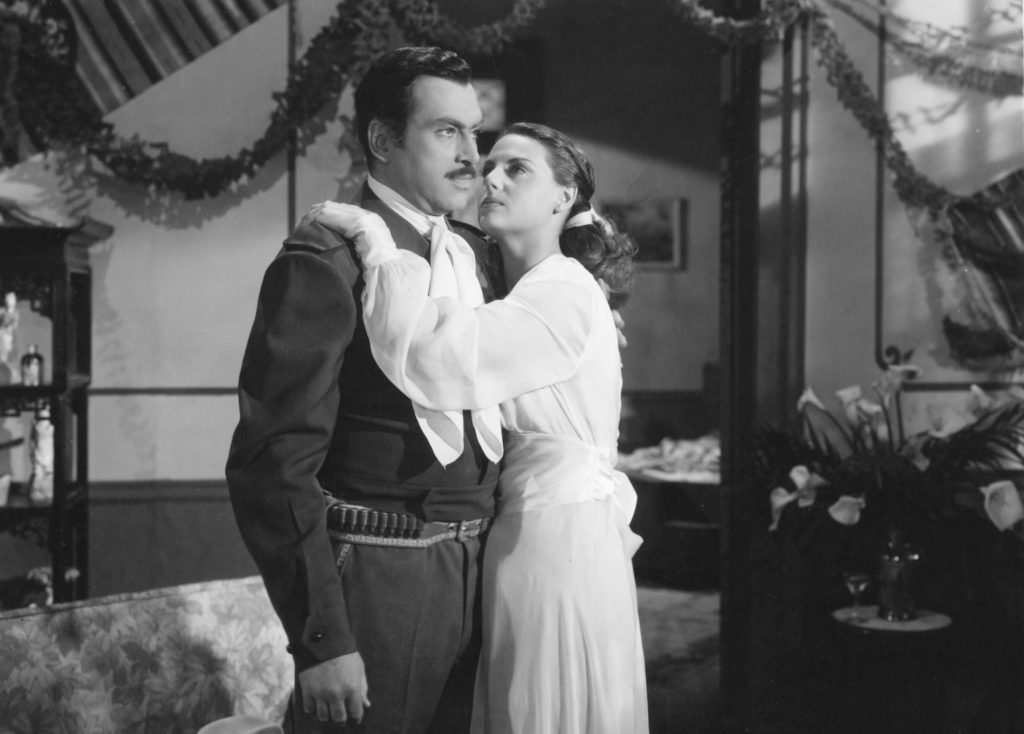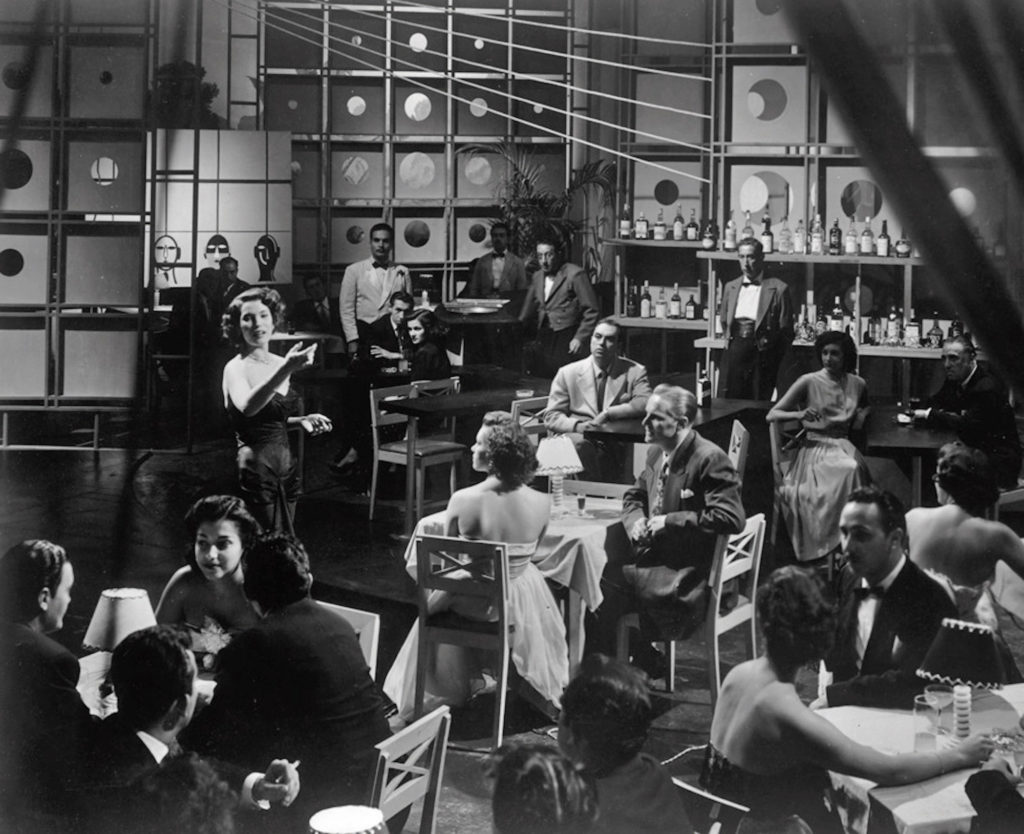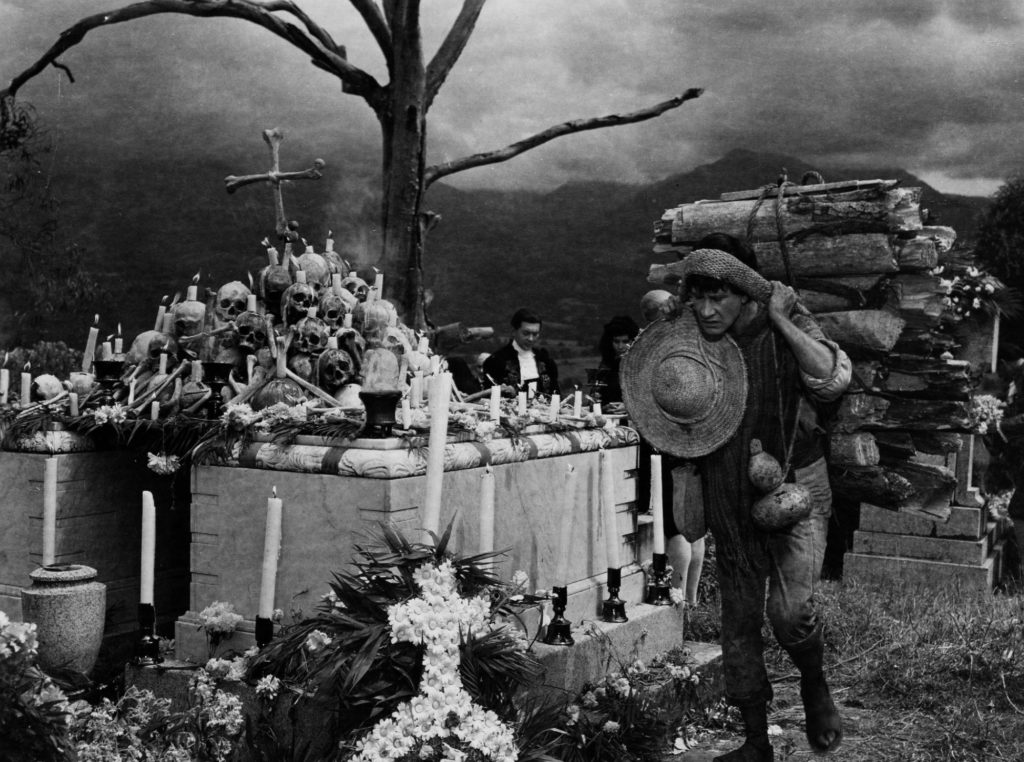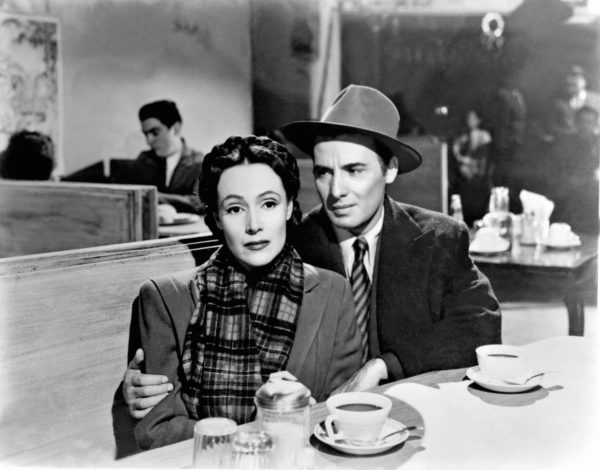by Daniel Eagan
New York’s Museum of Modern Art continues its admirable exploration of Mexican cinema with “Roberto Gavaldón: Night Falls in Mexico,” a retrospective running April 24 through May 5. Like last year’s Emilio Fernández series, “Night Falls in Mexico” highlights the work of a world-class director whose films are almost unknown in the United States.
At the height of his career, Gavaldón was more commercially successful than colleagues like Fernández and Luis Buñuel. Some critics considered his movies superior as well. They spoke to both sophisticates and mainstream viewers, connecting with audiences in ways that his rivals couldn’t match.
Gavaldón had a dark, often cynical vision, one in which authorities were corrupt, evil defeated good, and everyone looked out for number one. It’s a world that fits comfortably into what we think of as film noir, but Gavaldón went further than dark streets, femme fatales and hard-bitten saps. He embraced a sense of destiny, a predeterminism that controlled our lives. His characters find themselves on paths laid out before they were even born. They succumb to desires they know will ruin them, and are blindsided by twists of fate they should have seen coming.
It’s a dark message at odds with the insistent machismo and nationalism of Fernández, or the casual cruelty of Buñuel. The seething emotions, turbulent plots, and larger-than-life characters were attuned to the melodrama Mexicans admired in music and painting as well as movies. Gavaldón tamed the form’s excesses while turning the screws on both his characters and his viewers.
Biographical details about the director’s early life are sketchy. Born in 1909 in Jiménez in northern Mexico, he moved to Los Angeles in 1926. Sources claim he was a nightclub bouncer, a dental student, a fringe player in the movie industry. Like Fernández, he may have found work on the Spanish-language films Hollywood turned out during the transition to sound. One source lists Gavaldón as an “uncredited” assistant director on Viva Villa! (1934), an easy guess as the troubled MGM production burned through several directors in a shoot (and reshoots) that lasted for months in both Mexico and California.

Gavaldón built his directing style by working for the following decade as an assistant and co-director on over 50 features. He learned every facet of production, seeing what did and didn’t work, developing a sense of composition and pacing. By the time he graduated to directing with La barraca (1945), he had a fully developed visual and narrative style, one more limber, less formal than Fernandez; more flamboyant, less ascetic than Buñuel.
La barraca (screening April 25 and May 5) was a prestige project based on a best-selling novel by Vicente Blasco Ibáñez (The Four Horsemen of the Apocalypse). Gavaldón recreated a Spanish village to tell a story of intolerance and cruelty in 19th-century Valencia. The film won ten awards at the inaugural Ariel ceremony, Mexico’s version of the Academy Awards.
Gavaldón’s subsequent films are marked by strong, graphic visuals and propulsive editing. His thrillers move relentlessly, pulling their characters through smoky nightclubs, dim back streets, worn hotel rooms. He worked with the elite of the industry, stars like Dolores del Rio and Maria Félix, cinematographers like Alex Phillips and Gabriel Figueroa. He collaborated for years with composer Raúl Lavista, and wrote screenplays with the likes of Carlos Fuentes and Gabriel Garcia Márquez.

Rosauro Castro (1950, screening April 24 and May 4) has the heft of a woodcut or etching, with bold swaths of black and white outlining its characters. The story resembles a ranchera or ballad as morose and downbeat as a tune about the Hatfields and McCoys. It opens with a funeral procession and descends from sun-drenched markets and squares to mist-shrouded streets at night, light spilling from windows into the gloom.
In his Hollywood films, Pedro Armendáriz was relegated to sidekick roles—a friendly bandit with John Wayne and Harry Carey, Jr., in John Ford’s Three Godfathers, or a saintly peasant in the John Steinbeck adaptation The Pearl. Even in Mexican cinema, he often portrayed noble soldiers, laborers, men of decency and honor. In Gavaldón’s hands, Armendáriz was free to explore his brutal side. He is a ruthless, amoral athlete in La noche avanza/Night Falls (1952, screening April 27 and 30), using dirty tricks to defeat his opponents at jai alai, goading them into fights later in the locker room. He’s just as ruthless a lover, stealing from a wealthy heiress, cheating a heartsick nightclub singer, double-crossing a former partner in scams.
The title character in Rosauro Castro, Armendáriz plays a monstrous landowner who controls every aspect of a remote town—beating and killing foes with impunity, abandoning his mother and wife for a mistress in town, taunting a big-city lawyer seeking justice, sending enemies into exile, defying the wrath of a bereaved mother.
Gavaldón adds enough depth to bring out Castro’s humanity, to keep him from total villainy. He loves his son, for example, is apparently deeply devout and fiercely brave. He stands by his word, delights in simple pleasures, and has undeniable charisma. It’s a complex role, and Armendáriz delivers a spectacular performance, bursting with contempt and anger, yet still smart enough to charm both friends and foes. He’s reminiscent of Broderick Crawford in All The King’s Men, another political allegory that refused to explicitly condemn its fictionalized version of Huey Long.
Gavaldón’s relationship with matinee idol Arturo de Córdova stretched back to The Count of Monte Cristo in 1942. Córdova stars in two ridiculously enjoyable suspense films in the series, La diosa arrodillada/The Kneeling Goddess (1947, screening April 27 and May 2) and En la palma de tu mano/In the Palm of Your Hand (1951, screening April 26 and May 4)).

The best film noirs are marked by their flights and excesses. Elisha Cook, Jr., drumming maniacally in The Phantom Lady; Detour‘s Tom Neal accidentally strangling a woman behind a closed door; Jane Greer’s blood lust at the climax of Out of the Past. Gavaldón and his writers do the same in In the Palm of His Hand, abandoning the plot to inject moments of horror and black humor. Córdova and his nemesis face off in a country estate, about to come to blows, when there’s a knock on the door. It’s an American tourist lost in the rain, looking for directions to God knows where, a pivot worthy of a master like Hitchcock. It leads to a brilliantly staged murder.
In another example from Night Falls, Armendáriz is beaten senseless, about to be thrown into an irrigation ditch by crooks hired to kill him. Suddenly a thug remembers Armendáriz’s winnings from his jai alai championship. Arguing over his prone body in a beautifully lit overhead shot, they debate whether to revive him while glassy water swirls below.

Gavaldón was respected enough to direct two features in the United States. Hollywood then paid him its ultimate compliment by remaking his 1946 hit La otra/The Other One (screening April 26 and May 4). A vehicle for the sensational Dolores del Rio, it’s about twin sisters in love with the same man. One marries and becomes wealthy, the other spends years plotting against her. The outcome hinges on twists neither could have anticipated, leading to reversals that snap like steel traps. Gavaldón wrote the screenplay with his frequent collaborator José Revueltas, basing it on a story by Rian James (42nd Street). It was watered down as Dead Ringer (1964) for a hammy Bette Davis.
Just as in the United States, television took its toll on Mexican filmmaking. Gavaldón turned away from thrillers and suspense for Macario (1960, screening May 3 and 5), the first Mexican film nominated for a Best Foreign-Language Film Oscar. The film unfolds with the simplicity of a folktale or fable, but one with a poisonous sting. Macario is a woodcutter living in extreme poverty with a devoted wife and five small children. He is driven nearly insane with hunger by the sight of a half-dozen roasted turkeys carried through town to the wealthy Don Ramiro’s house.
Taking advantage of a theft, Macario soon has a roast turkey of his own, one he takes with him into a forest to avoid his grasping children. There he encounters temptations that have a biblical air to them. His choices take viewers on a journey ending in one of Figueroa’s most celebrated sequences.
Working from a story by B. Traven (best known in the U.S. for his novel The Treasure of the Sierra Madre), Gavaldón and his screenwriters use Macario and his story to dissect Mexican society: its rigid class structures, allegiance to the Church, preoccupation with death. It sounds deadly on paper, but the film is brimming with surprise and humor. With Figueroa’s stunning cinematography, Macario evokes works like Wild Strawberries, only with a distinctively Mexican flavor.
Gavaldón’s next film, Rosa Blanca/The White Rose (1961, screening April 28 and May 2), was also based on a B. Traven work. The story of a wealthy landowner battling American oil interests, it ran afoul of censors and was withheld from release for over a decade. Some writers saw this as payback of sorts for Gavaldón’s political activism.
In the 1940s, Gavaldón was a prime mover in the formation of the Union of Workers of Cinematographic Production (STPC), which split off from the government-led Union of Cinema Production Workers (STIC). To protect veteran directors, the STPC made it difficult for newcomers to find work. Some critics felt this led to a stagnation and decline of Mexican cinema in the 1960s. Gavaldón also campaigned for reforms to the Federal Law of Cinematography, biting the hand that controlled the entire industry.
Later critics complained that Gavaldón’s films were too formal, too “classical” and academic. As a result, his films were often overlooked in surveys of Mexican cinema. But more recent writers have re-examined his films, linking him to Hollywood directors like Douglas Sirk and Vincente Minnelli. New restorations of his best titles allow viewers today to appreciate just how talented and distinctive Gavaldón could be.



Share this post